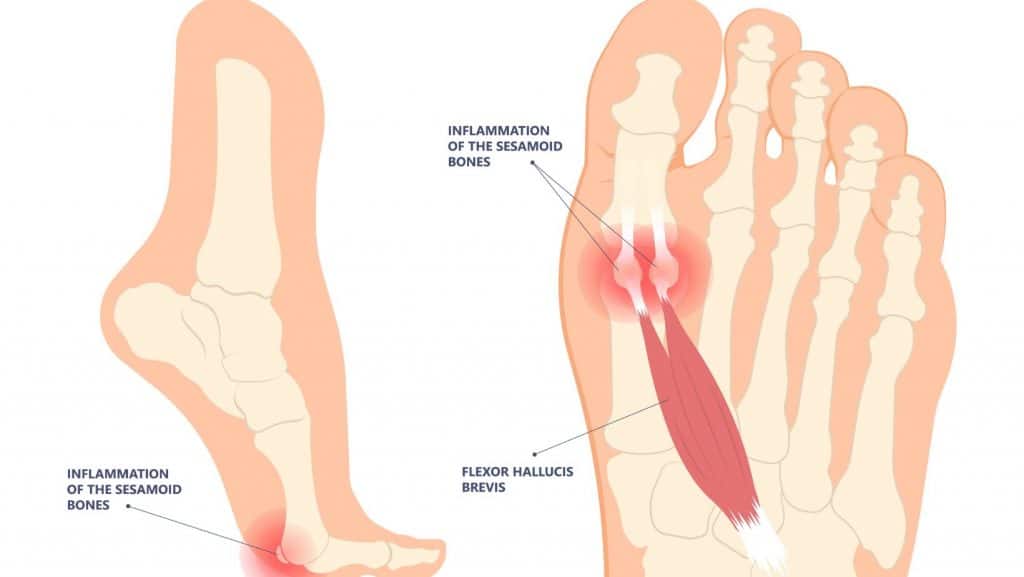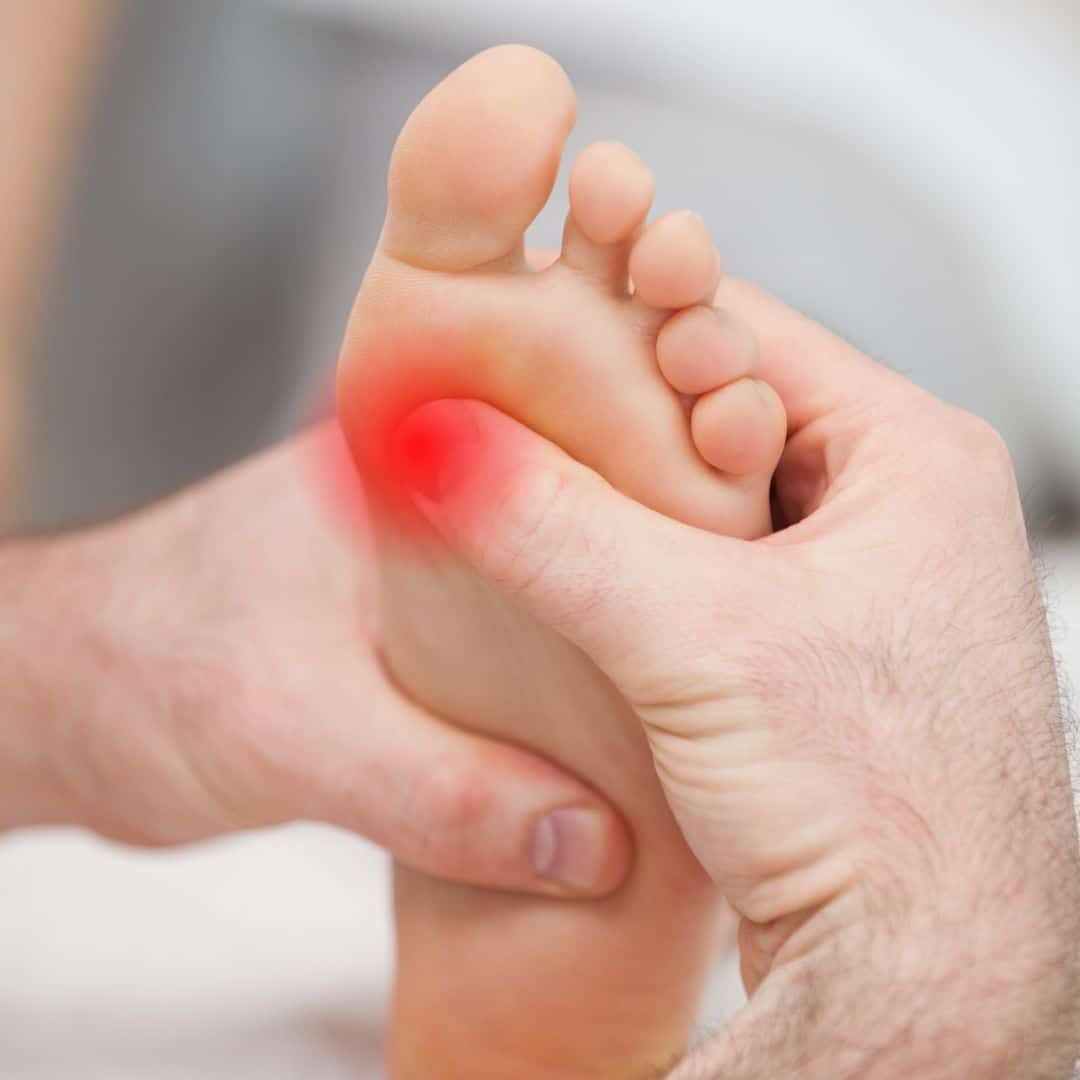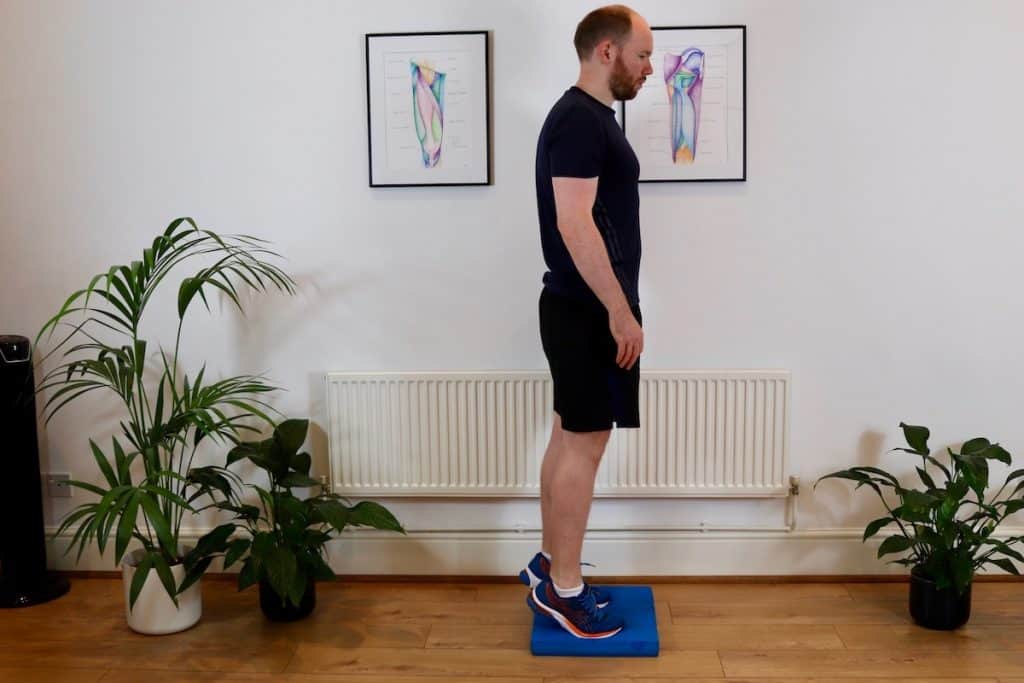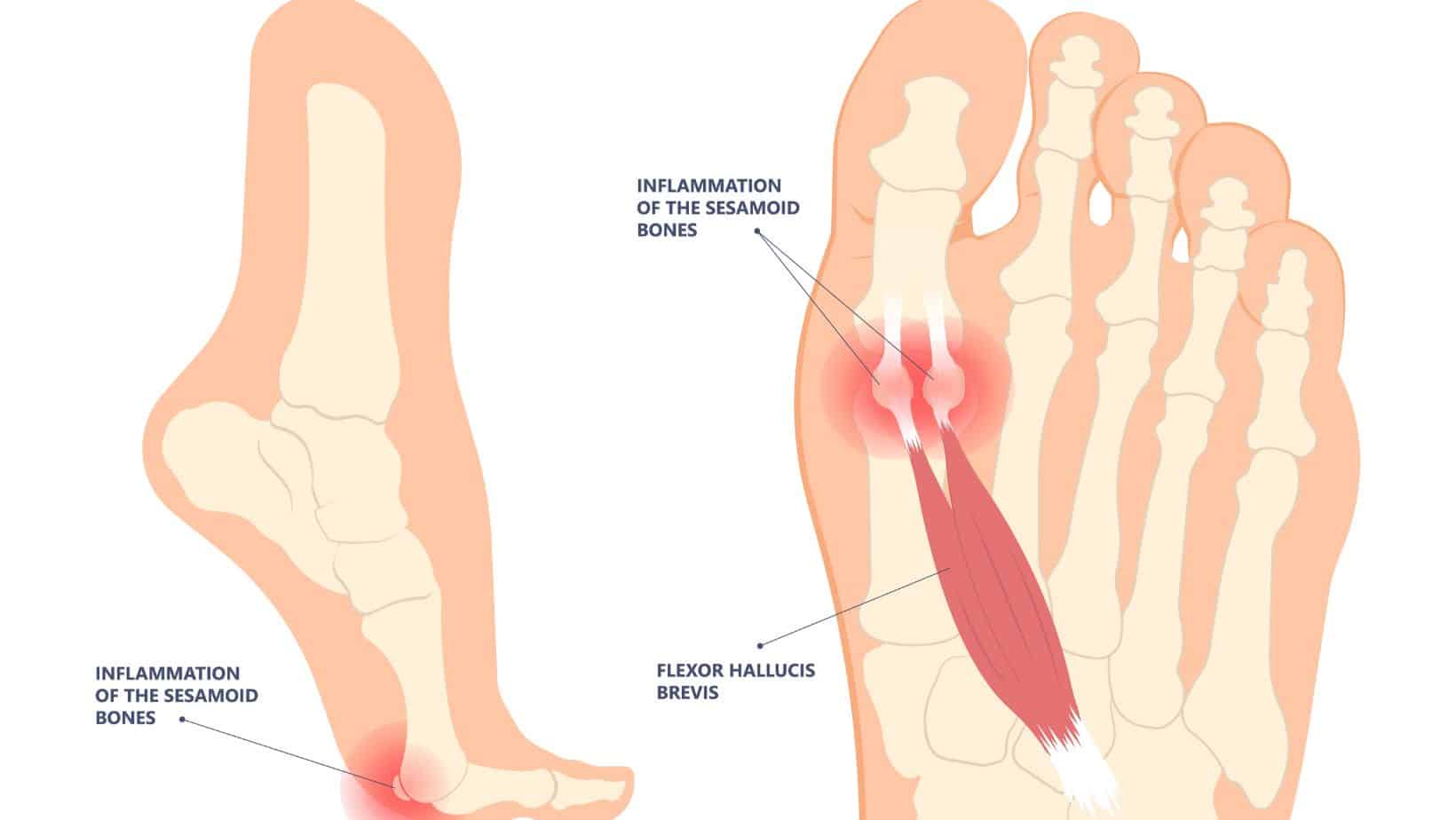Read More >
- Anterior Ankle Impingement - July 24, 2022
- Tarsal Coalition - October 12, 2022
- Sural Nerve Pain - October 3, 2022
Anatomy
A sesamoid is a floating bone that sits within a tendon, and the most well-known sesamoid is the knee cap (patella). These sesamoid bones act as a lever for the tendons to pull on, allowing them to apply more force through the area than an isolated tendon.
In the foot, the two sesamoids sit in the tendon of the Flexor Hallucis Brevis. The medial sesamoid, which sits towards the inside of the foot, bears more weight and is more commonly injured, while the tibial sesamoid sits on the outer aspect. When one or both sesamoids become inflamed, it is known as sesamoiditis.

Symptoms of Sesamoiditis
Sesamoiditis can cause swelling on the underside of the big toe joint, although in severe cases, it is not unusual for the entire big toe joint to become swollen.
Patients describe burning pain under their big toe when weight bearing, especially with impact activities such as walking and running. Visible bruising is less common and is more commonly associated with a fracture.
Moderate to severe symptoms of sesamoiditis can make it too painful to walk, or people subconsciously begin to walk on the outside of their feet to offload the sesamoids. In a non-weight-bearing position, bending or straightening your big toe can be painful.


Sesamoiditis Causes
A sudden change in activity levels can be sufficient to cause sesamoiditis. Examples of this include increasing your step count dramatically which we commonly see in people returning from city breaks or increasing impact such as running and jumping.
A change in footwear can cause sesamoiditis, especially in the summer when people transition from cushioned winter shoes to flip-flops. While high heels are one of the primary causes of sesamoiditis due to the direct impact being placed on them.
Other causes of sesamoiditis include flat feet, hypermobility, climbing, gymnastics, ballet and dancing.
Sesamoiditis Diagnosis
A Physical examination by a Physical Therapist or a Sports Physician can be sufficient to diagnose Sesamoiditis. A Physical examination involves a clinical interview and palpation of the sesamoids for tenderness. If the clinician suspects a fracture or another cause of your pain, they may refer you for imaging.
An x-ray is a valuable tool to rule out a stress fracture of the sesamoid bones. At the same time, an MRI or Ultrasound are more effective for diagnosing Sesamoiditis as they can detect swelling and inflammation of the soft tissues around the bone and the sesamoid itself.
Home Treatment for Sesamoiditis
The quicker you can identify the symptoms of Sesamoiditis and begin some form of treatment, the better, as this can be difficult to settle due to the fact you are weight-bearing throughout the day.
- Ice the sesamoids for 15 minutes 3-4 times daily
- Rest from weight bearing and walking as much as possible
- Wear cushioned shoes when walking
- Take anti-inflammatories or apply topical anti-inflammatory cream
- Choose non-impact activity such as swimming for cardiovascular exercise
Sesamoiditis Treatment
A physical therapist or a podiatrist best does treatment for sesamoiditis. Early-stage treatment will be similar to our recommended home treatment.
They are likely to tape the big toe into a slightly bent (plantarflexed) or neutral position, reducing the use of the big toe and, in turn, the sesamoid. Gel pads or padding with felt is another effective treatment for offloading sesamoids.
The clinician identifies tightness and balance issues in your assessment, which usually commences with stretching, especially in the calf muscles. As symptoms improve, patients progress onto ankle and foot muscle strengthening exercises alongside balance and stability exercises.

Sesamoiditis Taping and Sesamoiditis Padding
The sesamoid bones sit on the underside of the big toe joint and bear weight when standing, walking and running, making it a tricky condition to manage effectively. Sesamoiditis taping and padding can reduce the load placed through the sesamoid bone during these activities, reducing inflammation and maintaining a certain activity level.
Other Treatment Options
A conversation with your clinician about the appropriate footwear is essential, as you may need supportive or cushioned footwear. In some cases, a custom insole is required to improve the mechanics of the foot if this is a cause of your Sesamoiditis.
In very irritable cases, patients can be referred for an ultrasound-guided cortico-steroid injection into the sesamoids to reduce inflammation levels in the area. Some Sports Physicians recommend 1-2 weeks in a walker boot after the injection to allow the injection to take maximum effect. Following this, rehabilitation recommences.
If these treatment methods are unsuccessful, a minority of cases may require surgery. Surgery for Sesamoiditis involves the removal of the affected sesamoid.
Turf Toe vs Sesamoiditis
Turf toe is a hyperextension of the big toe that irritates the joint, whereas sesamoiditis is inflammation of one or both of the sesamoid bones that sit under the big toe.
Turf Toe pain is usually in the entire joint, so it can be painful on the side and top of the joint, whereas Sesamoiditis is painful on the underside of the foot only.
Physiotherapy with James McCormack
This article is written by James McCormack, a Lower Limb Specialist who is an expert in treating Sesamoiditis.
This is not medical advice. We recommend a consultation with a medical professional such as James McCormack if you are experiencing any of the symptoms discussed in this article. James offers Online Physiotherapy Appointments weekly and face-to-face appointments in his London clinic.

